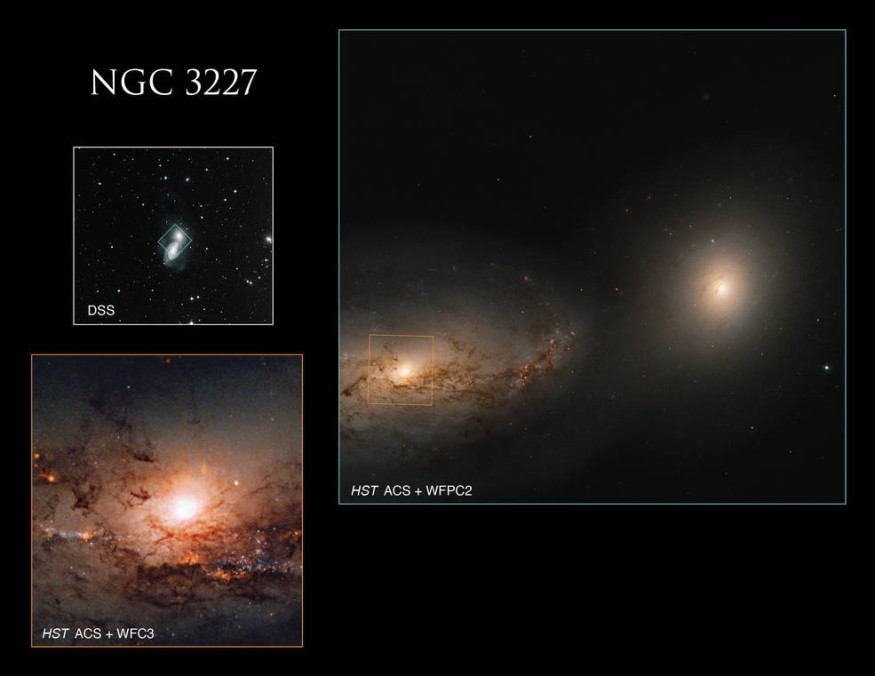NASA's Hubble Space Telescope discovered two galaxies colliding in a tumultuous gravitational dance. These galaxies are connected to the body of a cannibalized neighbor in this beautiful yet disturbing shot.

NASA Hubble Space Telescope Finds 2 Galaxies Doing Haunting Dance
The huge spiral galaxy NGC 3227 and the elliptical galaxy NGC 3226, commonly known as Arp 94, form part of this cosmic dance. These galaxies are located near the constellation Leo and are about 50 and 60 million light-years distant from Earth.
In their gravitational dance, the NGC 3227 and the NGC 3226 are connected by weak gas and tidal dust streams, as shown in a new Hubble Space Telescope photograph. According to a NASA release, the finding was made possible by the space agency's initiative to monitor black holes at the heart of luminous cluster galaxies.
The spiral galaxy NGC 3227 is a Seyfert Galaxy, which means it has an active nucleus and is driven by a supermassive black hole in its center. When the black hole absorbs material from its surroundings, it ejects huge amounts of radiation, which fuels the galaxy's active nucleus, according to NASA.
By observing the dynamics of the inflowing gas emanating from the galaxy's center, the Hubble telescope was used to determine the mass of the black hole. Both visible red and near-infrared wavelengths of light were snapped by the space telescope, as seen by the read regions in the shot.
The spiral galaxy NGC 3227 is shown in the bottom left of the Hubble image, while NGC 3226 is seen in the upper right.
The new picture released on Wednesday, May 25, gave a clear perspective of NGC 3227's black dust lanes and dazzling star-forming areas. The shot also showed the brilliant material streamers that connected the two galaxies.
Was It Connected To Dead Galaxy?
According to previous Hubble studies, the streamers linking the two galaxies are remnants of a third galaxy that was likely swallowed by NGC 3226, resulting in the dispersed shreds of a cannibalized galaxy stretched over space.
Even though it has vast streams of gas and dust - leftovers of a dead galaxy - pouring directly into its center, these previous findings suggest that NGC 3226 has a poor star creation rate.
NGC 3226, which is only 50 million light-years distant, is reasonably near, according to Space.com. The huge spiral galaxy emits "several star-studded, gassy loops," according to the space agency.
According to NASA, a streamer between a spiral and an elliptical galaxy has "extinguished star formation by agitating the available chilled gas."
Furthermore, a stunning chunk of these cosmic remnants spans 100,000 light-years and extends deep into NGC 3226's center. A curving plume emerges from the long tail's termination, surrounded by a disk of heated hydrogen gas and a ring of dust.
NASA also stated that the materials contained in the tail are being dragged towards NGC 3226 by its gravity.
Check out more news and information on Space in Science Times.
© 2026 ScienceTimes.com All rights reserved. Do not reproduce without permission. The window to the world of Science Times.











